Herbarium
Solo exhibition
Centre of Modern Art Solvay
X - XI 2008
The culmination of my artistic studies was the exhibition of my diploma series “Herbarium”. It took place in the Centre of Modern Art Solvay in Krakow, from October to November 2008. I presented there 4 large watercolour paintings (1000 x 150 cm) and a few smaller works (150 x 60 cm).
The motives of this series, although inspired by herbarium books, are far from figurative paintings. These abstract motives are not supposed to illustrate any specific plants, species or places, but visions of the power of nature – its colours in the shade and bright light, elements – water and wind, sea currents, its cycles and moods. Images transformed from reality are a record of impressions and memories, the source of which lies in the observation of nature. Nature creates the most beautiful shapes, colours and compositions. Pictures hidden in jasper, or perfect sculptures of fossils, reliefs on the bark of a tree – they are unique works that cannot be copied. Therefore, I believe an artist shouldn’t be trying to imitate these genius effects of nature, but only its processes of creation. Allowing to be overcome by reflex, impulse, spontaneity, and chance.
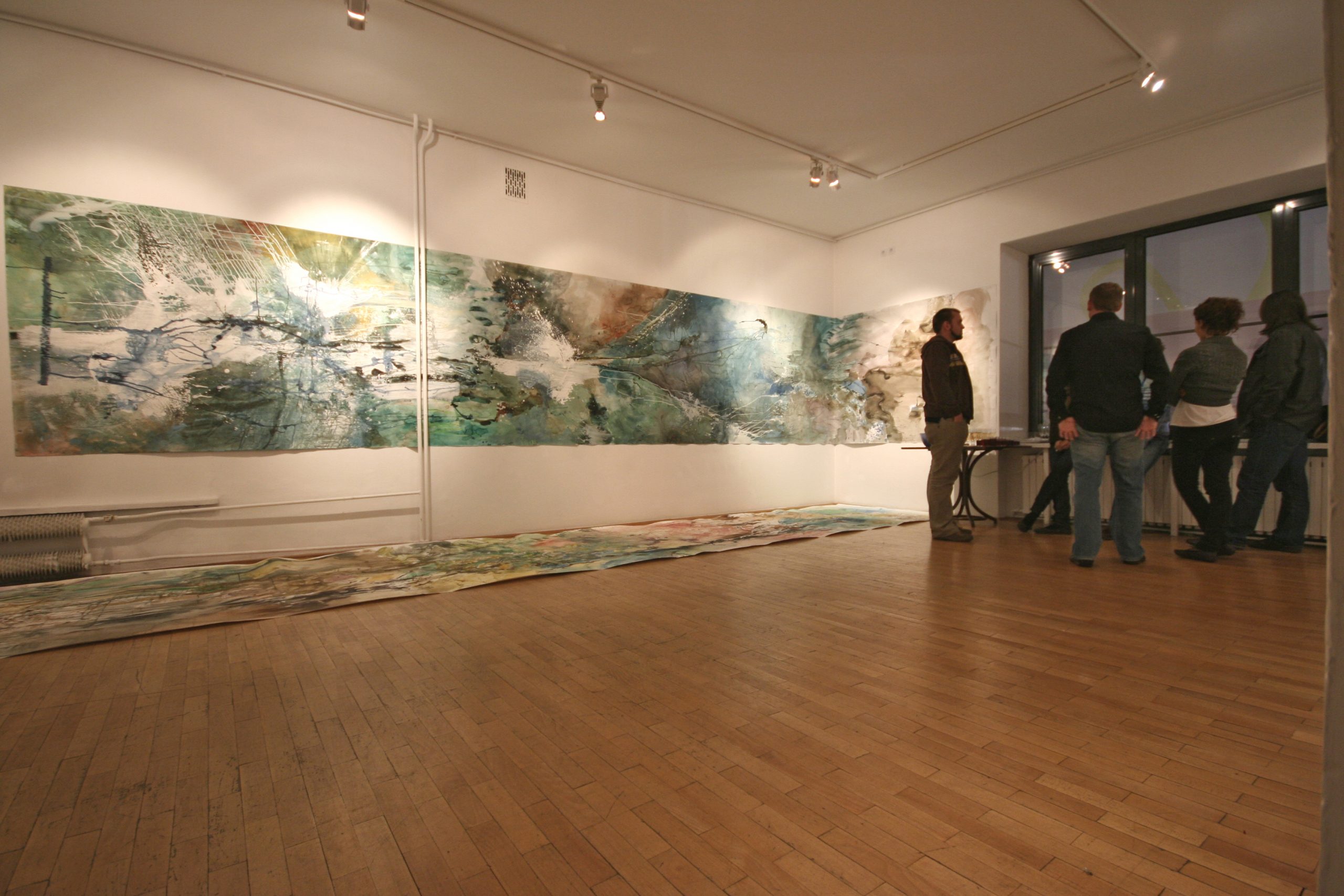
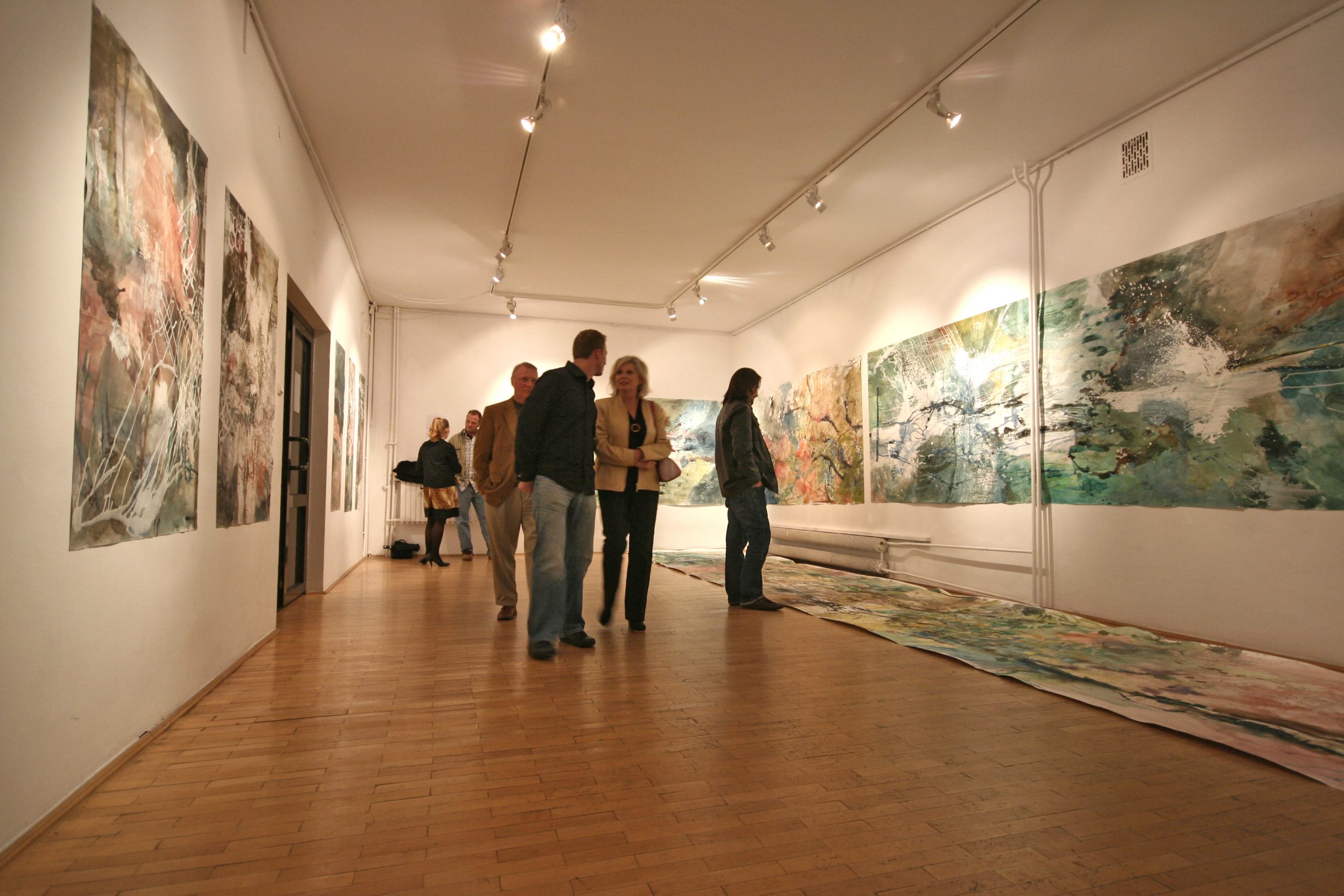
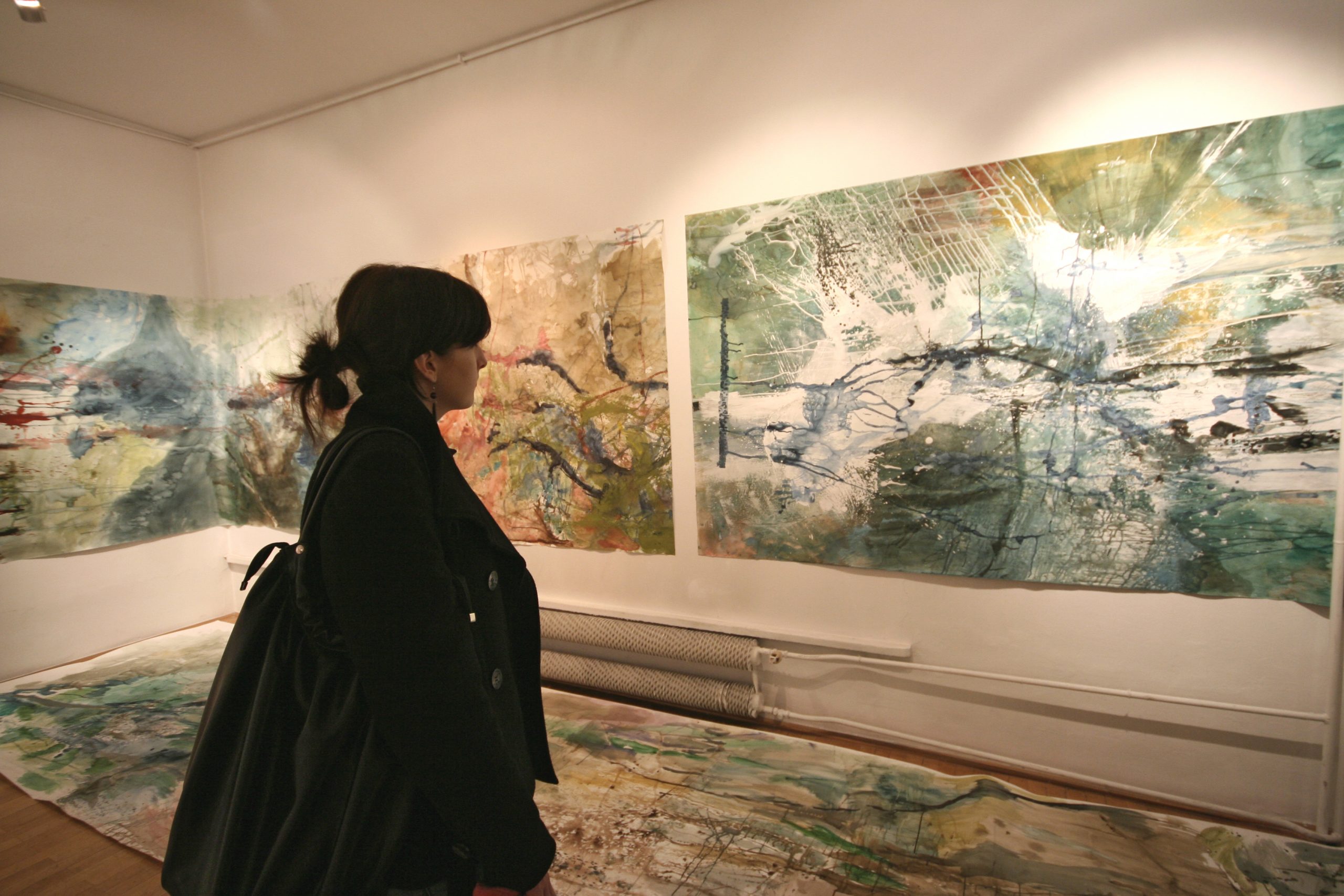
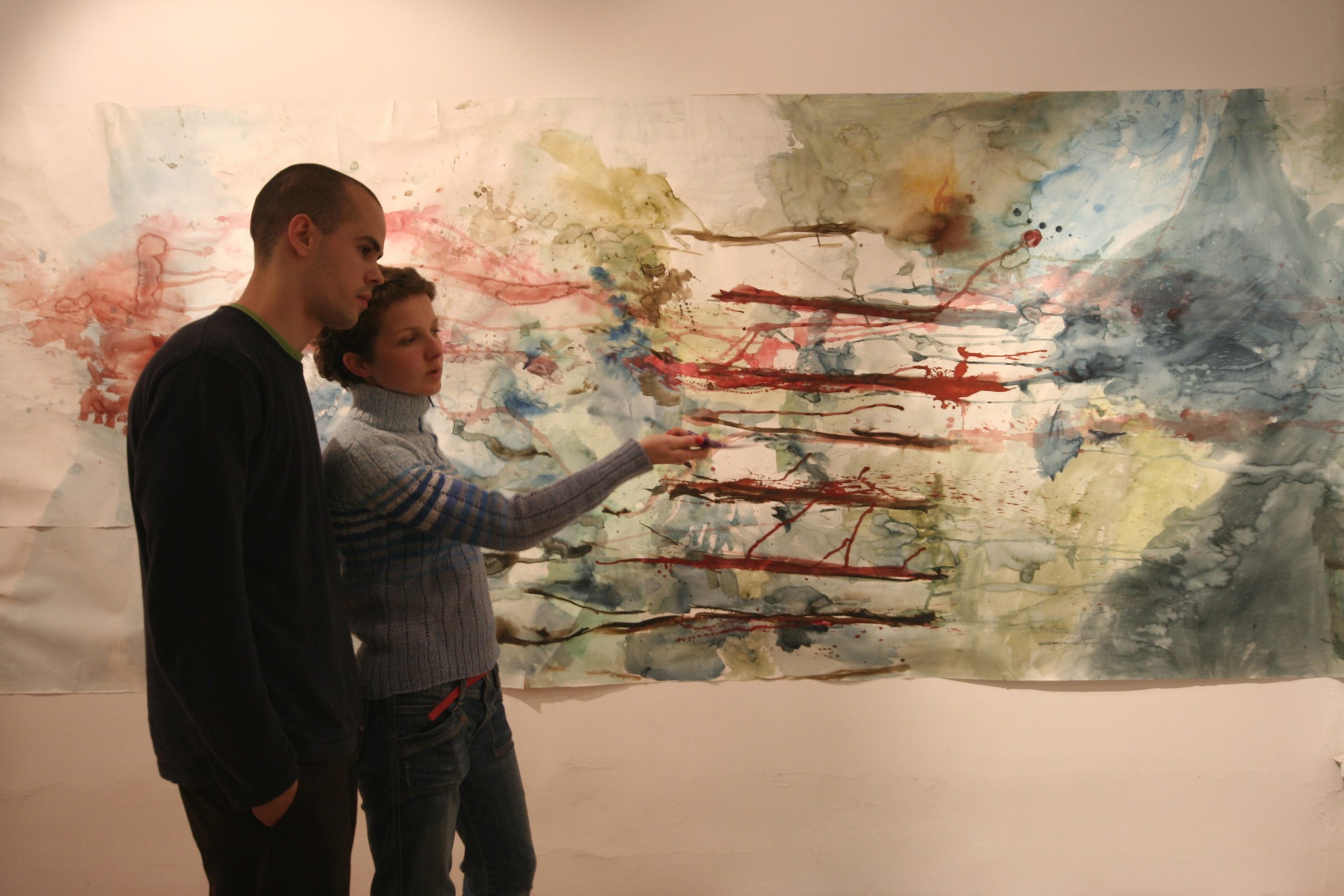
The lack of a single point of view and a multitude of overlapping fragments – is the result of subjective, “uncomfortable” perspective that does not make it easier to look at the picture as a whole. From the enormous context of nature, individual fragments must be selected in order to be to comprehend the whole. Spotted among many others, the leaf will amaze you and soon after it will end up between the white sheets of the herbarium book. There it will appear in a totally different set and order (among other fragments of nature).
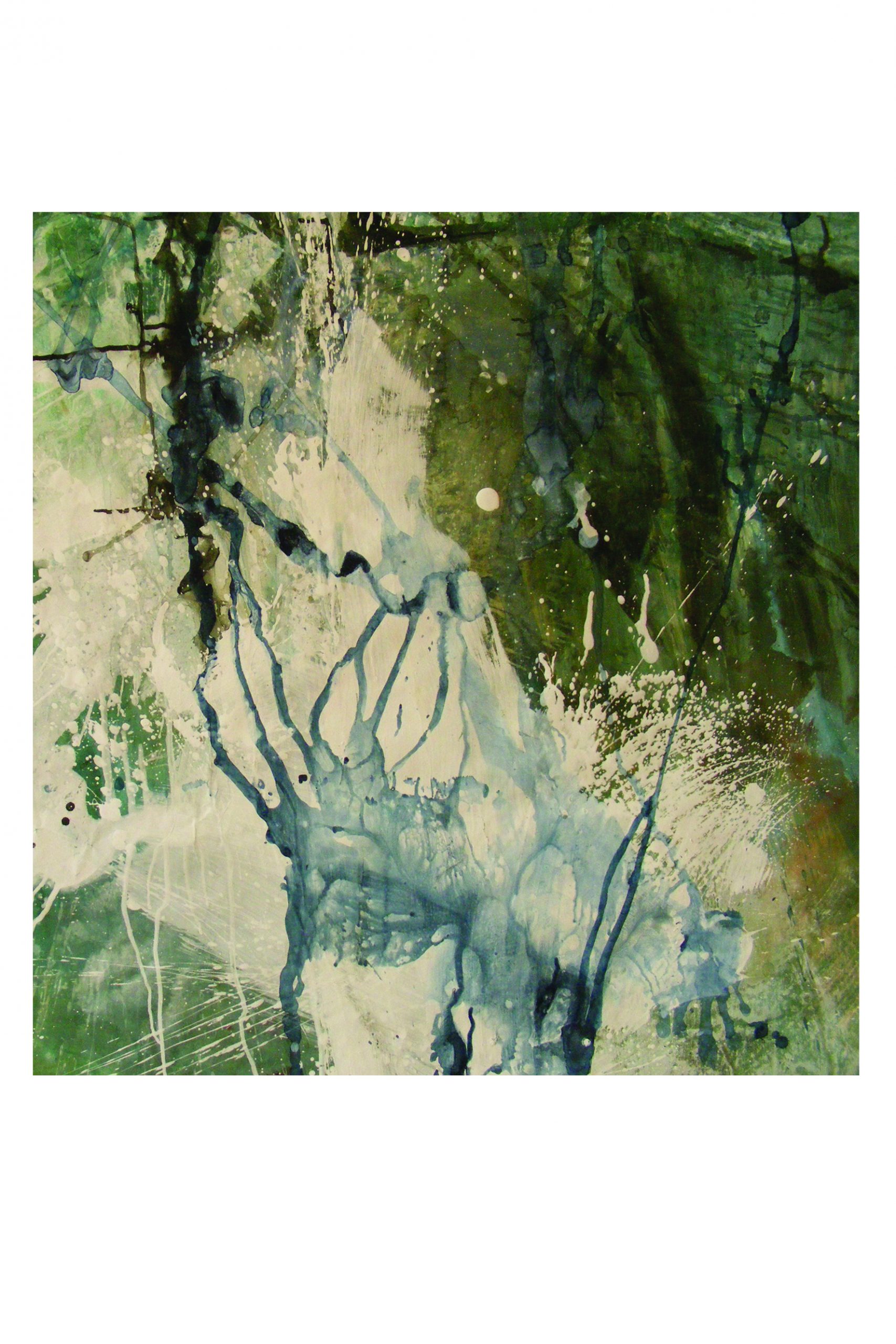
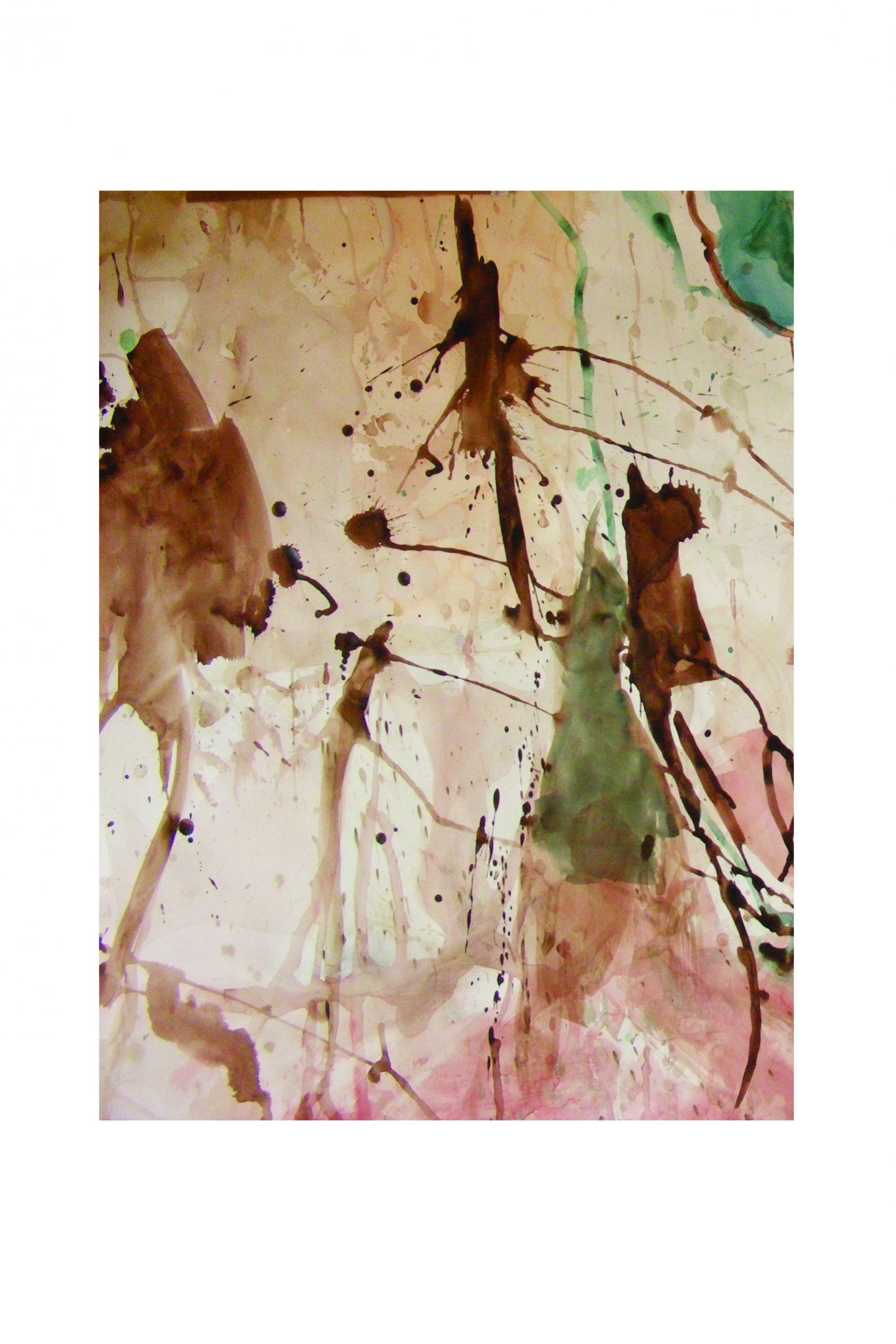
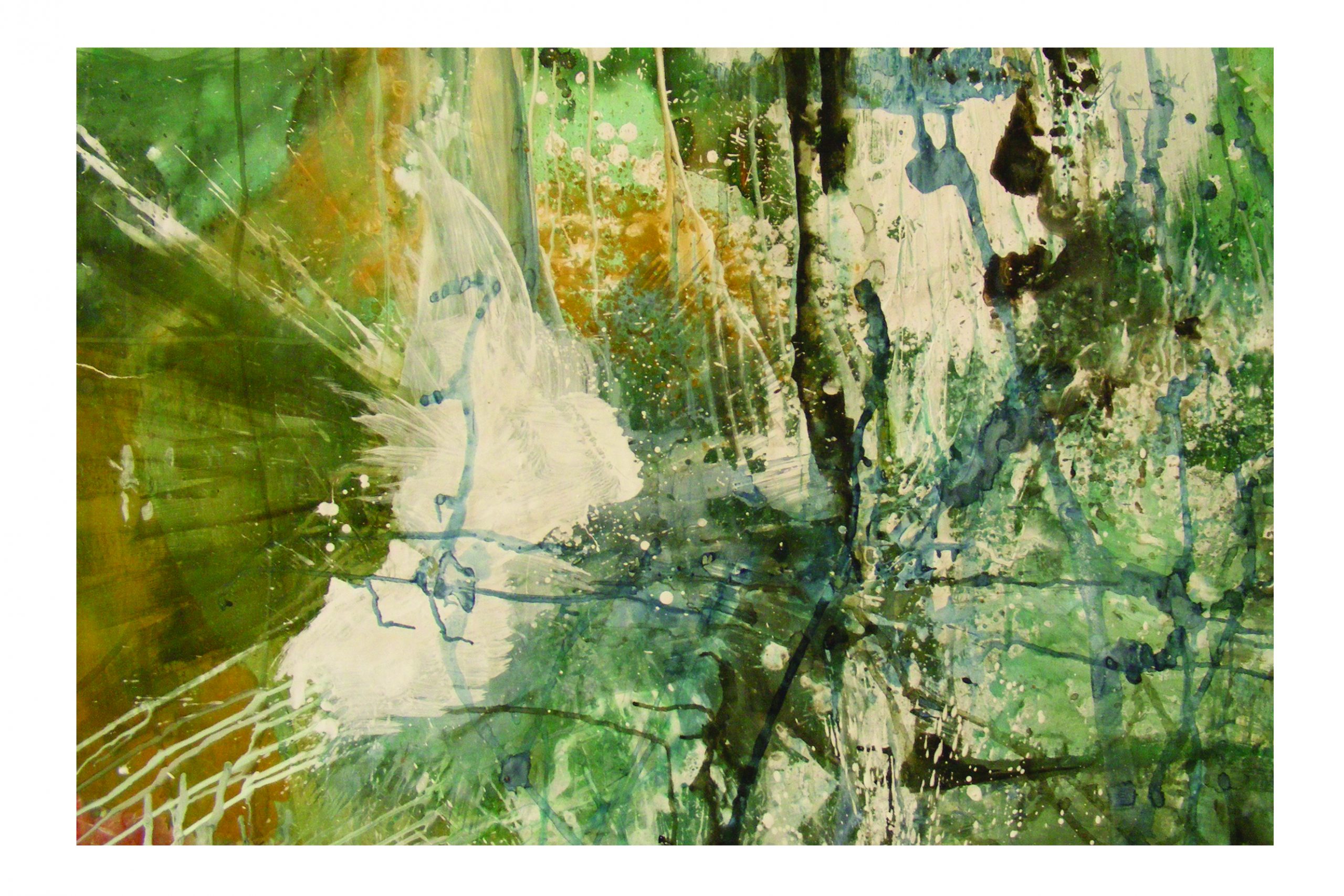
Considering the essence of painting itself, I strive to constantly verify the medium. I experiment with the structure of the paper, exposing it to the damaging effects of water, brush pressures, accidental fluff and tearing… After all these exertions paper will not return to its previous state but it preserves all these actions. A stain of colour falls on a pure white sheet, then splashes and flows along the trace of the previous dent, dries up and stays there…forever.
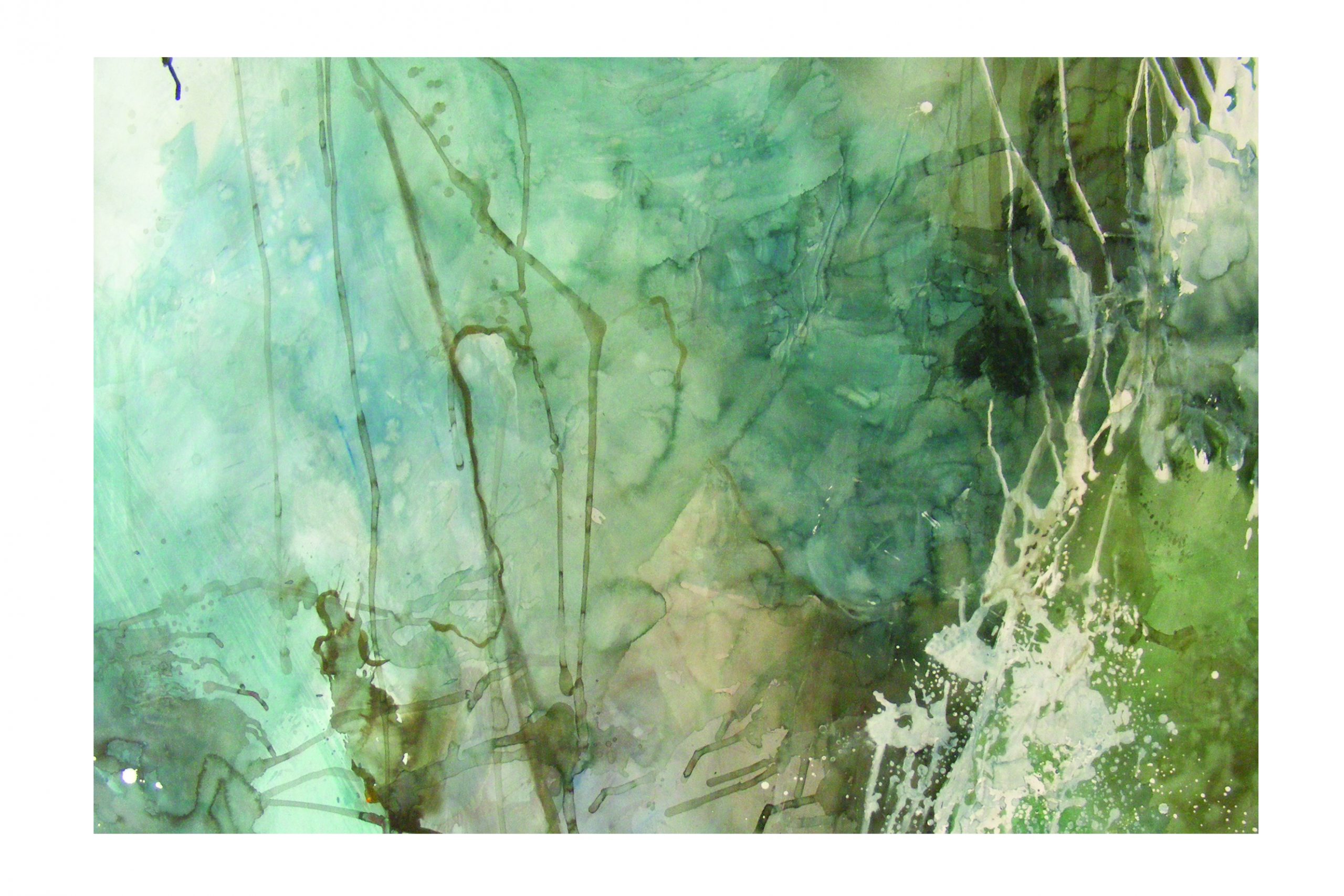
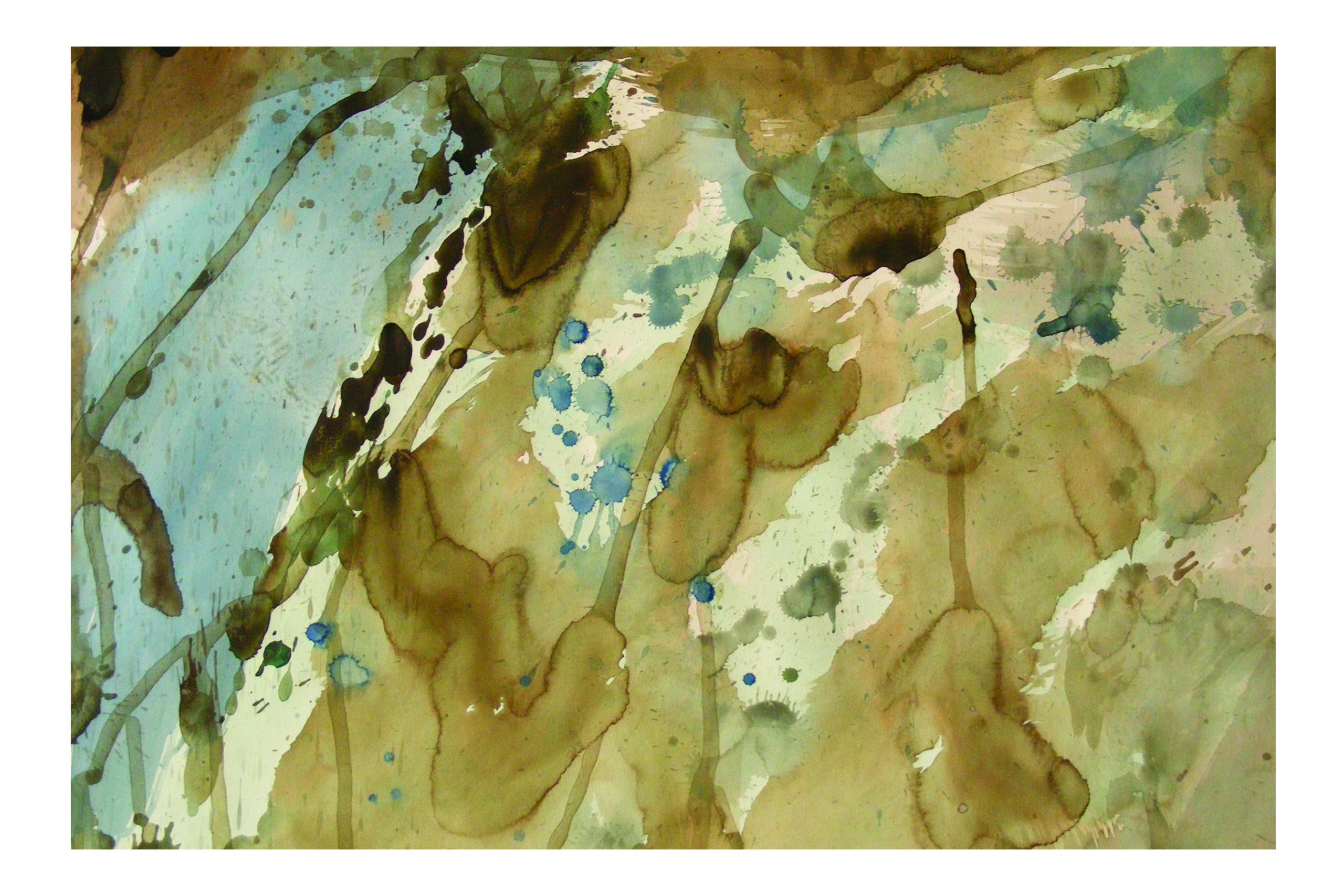
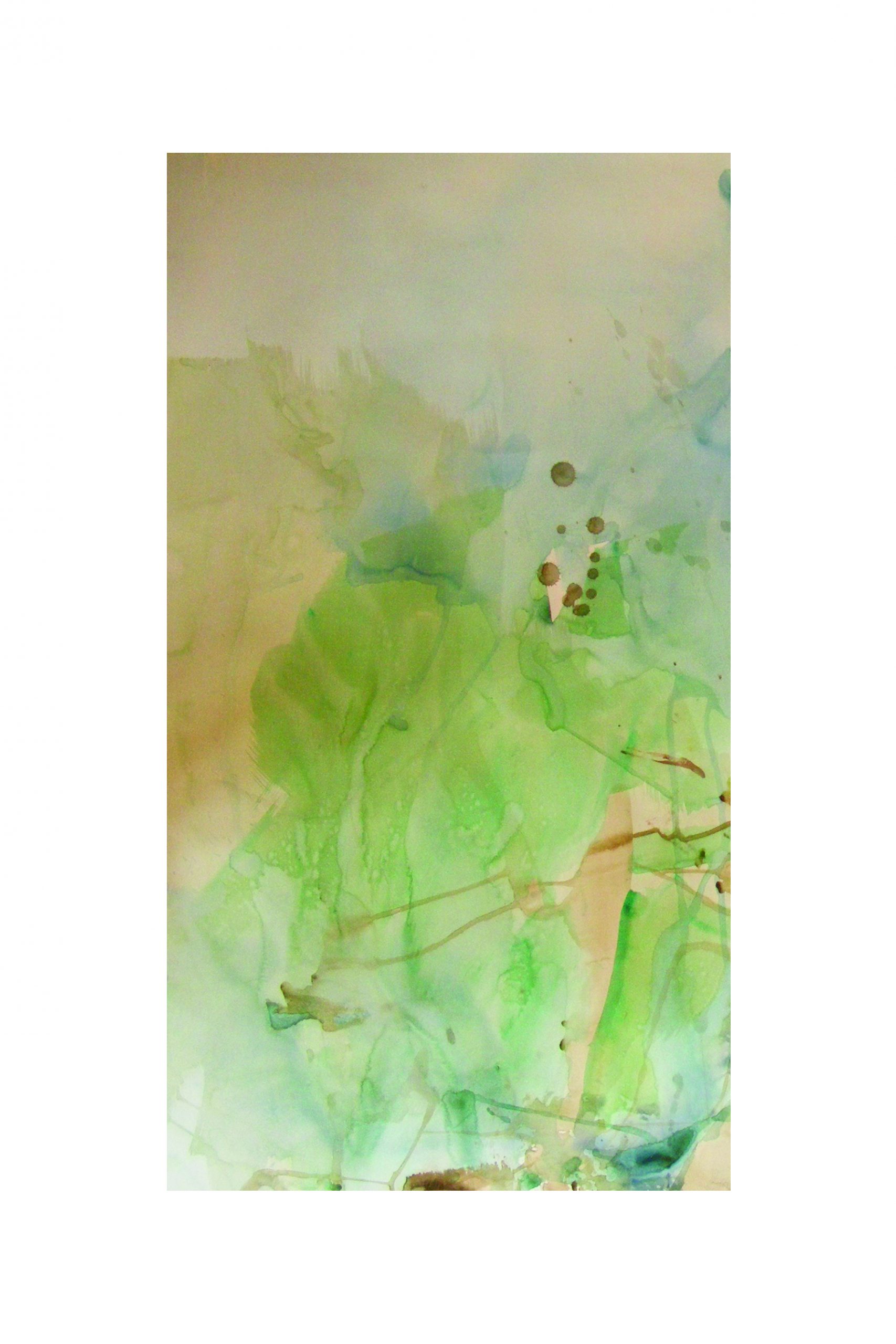
Watercolour paint doesn’t always favour precision, it doesn’t tolerate corrections and chiselling. Moreover, it contains a significant element of chance. A drop of paint can create an unexpected effect. The waves on the paper give direction to the flowing colours. I watch this seemingly independent play of colours and shades, I let them disperse freely on the paper. Interference is based on anticipation. Knowing how the stains behave, I influence their arrangement. I decide on their place and importance for the whole picture. This dialogue between the artist and the image does not last long. The paint will dry quickly, remaining just a motionless record of the gesture.